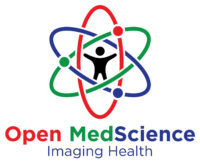Multimodal therapy supports overall health by combining treatment approaches, from therapies to physiotherapy and occupational intervention. Thus, the process requires clear and consistent communication across different healthcare providers for this collaborative approach to work. Transcription proves invaluable in such a communication process. Below, we discuss how it serves as a communication bridge beyond the administrative convenience it provides.
Building Effective Multimodal Therapy Plans: The Role of Transcription
Practitioners offering multimodal therapy combine several strategies to support mental, emotional, and physical health instead of relying on a single method. Doing that tailors interventions more precisely based on the condition, lifestyle, and health goals.
So, how does transcription come into the picture? For instance, with Ditto Transcripts, practitioners can convert spoken content into accurate written records. These can be detailed notes from talk therapy appointments, observations during physical or occupational therapy or discussions between providers when planning or adjusting treatment. Here are the benefits.
Improved Information Accuracy
Minor details can shape treatment decisions. Therefore, transcription captures the exact wording from therapy sessions. It reduces the chance of errors that result from practitioners relying on memory or handwritten notes.
For example, a comment from a therapist about the emotional triggers or the observations made by a physical therapist about mobility progress become part of a precise, permanent record. These transcripts offer clarity, especially when treatment involves multiple specialists and decisions rely on shared understanding.
Consistent Treatment Documentation
Since several professionals contribute to a shared plan, transcription maintains a continuous and detailed record. It builds a structured narrative showing how a patient is responding over time. The transcripts also serve as a reliable source during reassessments or handovers, where continuity of care is critical. Instead of piecing together notes or verbal updates, providers can refer to uniform transcripts that show the complete picture.
Enhanced Interdisciplinary Collaboration
Multimodal therapy thrives on collaboration. However, busy schedules, varying communication styles, and separate documentation systems can cause gaps between team members. Transcription bridges those gaps by capturing key discussions from meetings, shared sessions, or provider updates in a format that all professionals can access and review.
Stronger Patient Engagement
Patients benefit when they can actively follow and understand their treatment journey. Transcription gives them that chance by providing written summaries of sessions, instructions, and feedback. Such records can benefit individuals with memory difficulties. They can revisit the conversations later after an overwhelming session.
Further, the written record can help them remember the coping strategies or exercises discussed, which enables them to stay within the treatment plan. It also allows families or caregivers to support care by reviewing the same information.
Better Continuity of Care
In long-term or complex treatment plans, care transitions are common. A provider may go on leave, a patient might relocate, or services may shift between settings. Without proper documentation, these transitions risk losing critical context.
Legal and Regulatory Compliance
Regulatory bodies and insurers demand detailed and accurate records. Transcription helps fulfil these requirements by offering clear, timestamped accounts of what took place during sessions or consultations. As such, practitioners present a well-maintained transcript instead of fragmented or incomplete notes during audits, insurance reviews, or legal inquiries.
Further, transcripts can demonstrate providers sought patient consent, gave clear instructions, and followed sound clinical reasoning.
Efficient Workflow Integration
Manual note-taking during or after therapy sessions can interrupt care and delay documentation. Transcription offers a more streamlined alternative. Hence, a provider can speak freely during a session or debrief afterwards, and transcription can capture those words in structured records. It allows professionals to focus on patients instead of administrative tasks like note-taking.
Further, some systems integrate with electronic health records (EHRs), which enables easy filing and retrieval of transcripts without creating extra administrative steps for the teams. For multidisciplinary teams, having such a shared, searchable archive eliminates repetitive documenting processes and aids faster decision-making.
Support for Remote or Hybrid Sessions
As telehealth becomes more common, especially in mental health and rehabilitation settings, transcription helps maintain continuity and clarity by documenting details from sessions and discussions. A transcript captures key insights and shares them across the care team. It’s helpful when some providers attend virtually while others work on-site.
Conclusion
Multimodal therapy is complex because it’s a collaborative effort of different practitioners. Thus, its success needs effective communication between the various healthcare teams involved and providing quality care.
One of the most effective ways to enhance communication and care in such settings is to ensure that every provider and the patient are on the same page. Transcribing the sessions captures sessions, discussions and progress reports. As such, the healthcare team receives the same information. It also helps practitioners comply with patient care regulations.
Disclaimer
The information provided in “Transcription Support in Multimodal Therapy Plans: Enhancing Communication and Care” by Open MedScience (11 June 2025) is for general informational purposes only. It is not intended as, nor should it be interpreted to constitute, medical, therapeutic, legal, or professional advice. While efforts have been made to ensure the accuracy and relevance of the content, Open MedScience makes no guarantees regarding completeness or applicability in specific clinical scenarios.
Transcription services, such as those mentioned in the article, should be evaluated and implemented in accordance with relevant healthcare regulations, institutional policies, and patient privacy laws. Practitioners and organisations are encouraged to seek appropriate professional guidance before adopting transcription solutions as part of a multimodal therapy framework.
References to specific services or companies, including Ditto Transcripts, are included for illustrative purposes only and do not imply endorsement or affiliation.
Readers are responsible for ensuring that any tools or practices mentioned are suitable for their clinical setting and compliant with local and national regulations.
You are here: home » diagnostic medical imaging blog »



